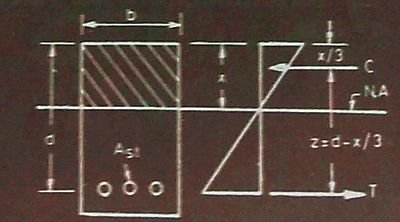Guide to design of Singly reinforced Sections | Building Construction
For the “design of Singly reinforced sections” article series, we have covered the following:
- Basic definitions and formulas
- Understanding stresses and modular ratios
- Assumptions for singly reinforced sections
- Design procedure for Singly reinforced section – I
- Solved Numericals for Singly reinforced beam | Method I
- Design of Singly reinforced sections | Design Method 2
- Solved Numericals for Singly reinforced beam | Method 2
- Moment of Resistance for Singly reinforced sections
- Solved numerical example | Moment of resistance
- Solved numerical example 2 | Guide to singly reinforced sections
Numerical Problem
Determine the following:
a) The position of the neutral axis
b) Lever arm
c) Moment of resistance
d) Percentage of steel
(For a rectangular beam section of width b mm and effective depth d mm. Take σcbc = 5 N/mm2, σst = 140 N/mm2, m = 18.66
To find Neutral Axis (NA)
σcbc /(σst/m) = xc/(d – xc)
5/(140/18.66) = xc/(d – xc)
Therefore, xc = 0.399d mm= 0.4dmm
